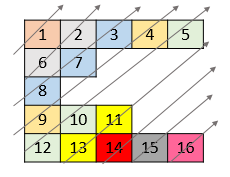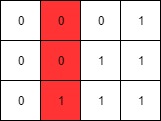LeetCode First Unique Number
You have a queue of integers, you need to retrieve the first unique integer in the queue.
Implement the FirstUnique class:
FirstUnique(int[] nums) Initializes the object with the numbers in the queue.int showFirstUnique() returns the value of the first unique integer of the queue, and returns -1 if there is no such integer.void add(int value) insert value to the queue.
Example 1:
Input:
["FirstUnique","showFirstUnique","add","showFirstUnique","add","showFirstUnique","add","showFirstUnique"]
[[[2,3,5]],[],[5],[],[2],[],[3],[]]
Output:
[null,2,null,2,null,3,null,-1]
Explanation:
FirstUnique firstUnique = new FirstUnique([2,3,5]);
firstUnique.showFirstUnique(); // return 2
firstUnique.add(5); // the queue is now [2,3,5,5]
firstUnique.showFirstUnique(); // return 2
firstUnique.add(2); // the queue is now [2,3,5,5,2]
firstUnique.showFirstUnique(); // return 3
firstUnique.add(3); // the queue is now [2,3,5,5,2,3]
firstUnique.showFirstUnique(); // return -1
Example 2:
Input:
["FirstUnique","showFirstUnique","add","add","add","add","add","showFirstUnique"]
[[[7,7,7,7,7,7]],[],[7],[3],[3],[7],[17],[]]
Output:
[null,-1,null,null,null,null,null,17]
Explanation:
FirstUnique firstUnique = new FirstUnique([7,7,7,7,7,7]);
firstUnique.showFirstUnique(); // return -1
firstUnique.add(7); // the queue is now [7,7,7,7,7,7,7]
firstUnique.add(3); // the queue is now [7,7,7,7,7,7,7,3]
firstUnique.add(3); // the queue is now [7,7,7,7,7,7,7,3,3]
firstUnique.add(7); // the queue is now [7,7,7,7,7,7,7,3,3,7]
firstUnique.add(17); // the queue is now [7,7,7,7,7,7,7,3,3,7,17]
firstUnique.showFirstUnique(); // return 17
Example 3:
Input:
["FirstUnique","showFirstUnique","add","showFirstUnique"]
[[[809]],[],[809],[]]
Output:
[null,809,null,-1]
Explanation:
FirstUnique firstUnique = new FirstUnique([809]);
firstUnique.showFirstUnique(); // return 809
firstUnique.add(809); // the queue is now [809,809]
firstUnique.showFirstUnique(); // return -1
Constraints:
1 <= nums.length <= 10^51 <= nums[i] <= 10^81 <= value <= 10^8- At most
50000 calls will be made to showFirstUnique and add.
设计题。设计一个队列,能够快速返回当前队列中第一个unique的数。
和之前的LRU很类似,使用list+unordered_map实现。list保存当前unique的数,unordered_map保存每个unique的数在list中的迭代器。当插入一个数到队列中时,首先看看在不在unordered_map中,如果不在,说明这个数是unique的,插入list和unordered_map。如果在,则看看unordered_map中的迭代器,如果迭代器不为空,说明这个数之前是unique的,需要从list中删掉;否则说明这个数之前就已经不是unique的了,不做任何操作。
完整代码如下:
class FirstUnique {
private:
list<int> uniques_;
unordered_map<int, list<int>::iterator> hash;
public:
FirstUnique(vector<int>& nums) {
for (int i = 0; i < nums.size(); ++i) {
add(nums[i]);
}
}
int showFirstUnique() {
if (uniques_.empty())return -1;
else return uniques_.front();
}
void add(int value) {
if (hash.find(value) == hash.end()) {
uniques_.push_back(value);
hash[value] = --uniques_.end();
}
else {
if (hash[value] != uniques_.end()) {
uniques_.erase(hash[value]);
hash[value] = uniques_.end();
}
}
}
};
本代码提交AC,用时520MS。





